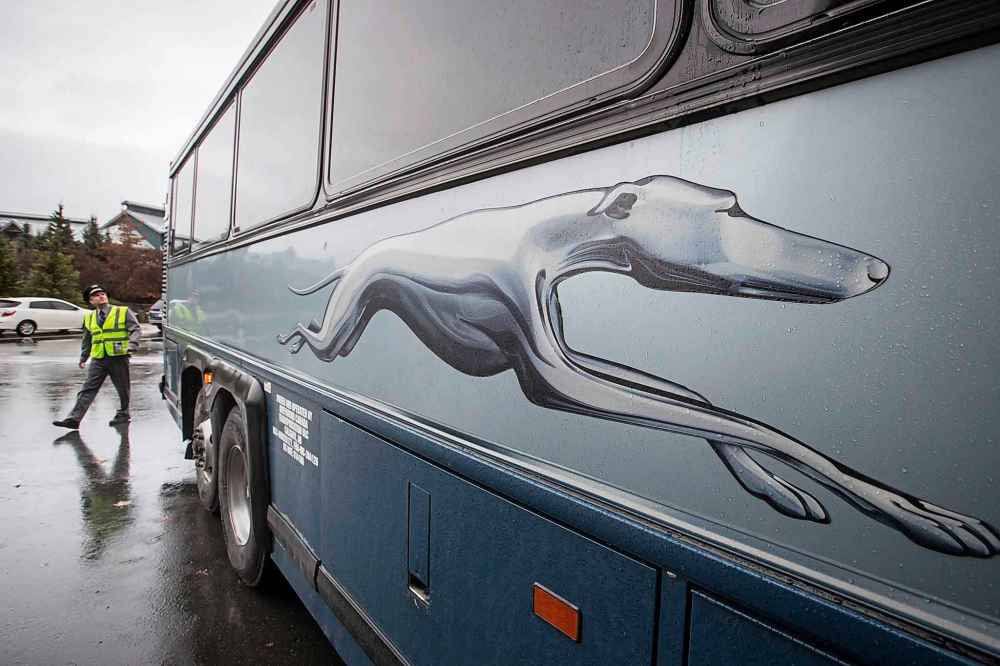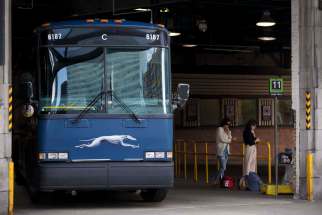Bus replacement needs public funding
Read this article for free:
or
Already have an account? Log in here »
To continue reading, please subscribe:
Monthly Digital Subscription
$0 for the first 4 weeks*
- Enjoy unlimited reading on winnipegfreepress.com
- Read the E-Edition, our digital replica newspaper
- Access News Break, our award-winning app
- Play interactive puzzles
*No charge for 4 weeks then price increases to the regular rate of $19.00 plus GST every four weeks. Offer available to new and qualified returning subscribers only. Cancel any time.
Monthly Digital Subscription
$4.75/week*
- Enjoy unlimited reading on winnipegfreepress.com
- Read the E-Edition, our digital replica newspaper
- Access News Break, our award-winning app
- Play interactive puzzles
*Billed as $19 plus GST every four weeks. Cancel any time.
To continue reading, please subscribe:
Add Free Press access to your Brandon Sun subscription for only an additional
$1 for the first 4 weeks*
*Your next subscription payment will increase by $1.00 and you will be charged $16.99 plus GST for four weeks. After four weeks, your payment will increase to $23.99 plus GST every four weeks.
Read unlimited articles for free today:
or
Already have an account? Log in here »
Hey there, time traveller!
This article was published 01/11/2018 (2598 days ago), so information in it may no longer be current.
Dogs have a reputation for being protective and loyal to the humans they serve. But a canine-named corporation that adorns the side of its iconic buses with a depiction of a racing dog has left without so much as an affectionate shake of the paw.
It’s all about business for Greyhound Canada, of course. The company says ridership in Canada has plunged 41 per cent since 2010, largely due to increased car travel and new low-cost airlines.
It’s about more than business, though, for the countless Manitobans who boarded and disembarked Greyhound buses at the terminal’s downtown location at Portage Avenue and Balmoral Street for 45 years before the terminal moved to the airport in 2009.

Greyhound’s services will be missed as a highway transportation option that was reliable and usually the cheapest way to travel between Prairie communities.
Such public transportation is a necessity for rural Manitobans without private vehicles, including First Nations residents. They require a reliable link to larger centres, such as Winnipeg, for purposes that include education, family visits and medical appointments.
It can also be a matter of safety. Referring to Manitoba’s alarming epidemic of missing and murdered women, the Native Women’s Association of Canada noted in a statement, “The lack of safe transportation in and out of communities creates more vulnerability for Indigenous women, girls and gender-diverse people by encouraging travellers to resort to less safe means of transportation, such as hitchhiking or walking unsafe highways.”
Unfortunately, these valid reasons for public highway transportation were not enough to persuade Greyhound to maintain unprofitable western Canadian routes.
The company’s Prairie pullout has prompted expressions of entrepreneurial interest from private operators in Manitoba. They hope to use cost-effective vans instead of Greyhound’s full-sized buses, and avoid the overhead of standalone bus terminals by operating out of such places as highway restaurants. They plan to focus on main routes — such as Brandon and Thompson — because, unlike Greyhound, they’re not required to service smaller routes that are unprofitable.
Good luck to the transportation startups. They’ll need it, if the experience of Saskatchewan holds true in Manitoba.
When the government-owned Saskatchewan Transportation Company shut its bus service in March 2017, at least 10 private bus firms tried to fill former routes. Within a year only two of them remained, and bus service across Saskatchewan remains sporadic and non-existent in places.

The Saskatchewan experience is a reminder that public transportation commonly requires public funding. For example, the city’s bus service, Winnipeg Transit, relies heavily on funding from different levels of government. No one would expect Winnipeg Transit to forgo all government funding and raise fares to cover 100 per cent of costs.
It was encouraging to learn Wednesday that the federal government will step in to help the transportation needs of some northern and remote communities affected by the departure of Greyhound. While specifics were not provided, Transport Minister Marc Garneau says Ottawa is open to helping affected provinces pay for bus service in communities where private enterprise has not come forward to service abandoned routes.
That optimism was tempered by the province’s reaction, however, as Infrastructure Minister Ron Schuler said Manitoba is unlikely to take up the federal cost-sharing offer: “We as a government are not prepared to get into the business of running buses; we believe the market will make a decision on what’s feasible.”
With Manitoba’s vast geography and relatively scant population, public highway transportation is critical. The connection between communities is driven by necessity.











